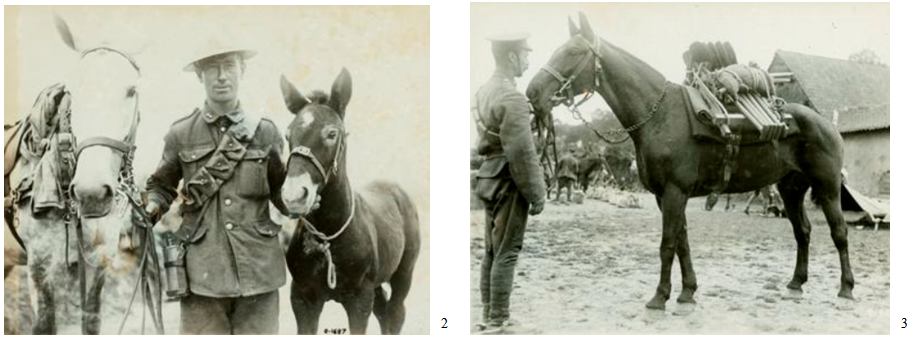Wednesday, February 3, 1915
In Hutments, Lark Hill, Salisbury Plains
The Battalion War Diarist wrote for this day: “Balance of wagons and mules received.” [1]
THIS DAY IN RMR HISTORY: “One Canadian Army Veterinary Corps officer in the First World War wrote that the life expectancy of a horse at the front was about six days.
Army veterinarians were crucial, not only during combat, but also in the lead up to it. When Canada’s 31 ship troop convoy sailed from Quebec to England in October 1914, 7,636 horses were packed on 14 of those ships. Of 973 equines on the SS Montezuma alone, only 86 died in the 11 day crossing.
That was thanks to supervision of the newly formed Canadian Army Veterinary Corps. Regiments had stopped depending on local vets starting in 1910. Nevertheless, only one of the new veterinary sections – two officers and 26 other ranks from Winnipeg – was ready to travel with that first Canadian flotilla in 1914, though another section mobilized the same month in Montreal.
Two Canadian veterinary hospitals were eventually set up – one in Le Havre, France, the other in Shorncliffe, England – and another 221 veterinarians moved about the front and elsewhere in the field, providing first aid and working to improve the fitness of the Canadian Expeditionary Force’s almost 23,500 transport and cavalry horses, as well as others of the Commonwealth forces.
An estimated 256,000 horses and mules died serving in the Commonwealth armies on the Western Front, and Canada’s army veterinarians worked tirelessly to reduce the losses. For that, in November 1918 they were named the “Royal” Canadian Army Veterinary Corps. By 1940 they had been disbanded, as armies had mechanized their forces, trading horses for horsepower.” [4]
[1] War Diary, 14th Canadian Battalion, The Royal Montreal Regiment, Feb 3, 1915. Library and Archives Canada, Ottawa, http://data2.collectionscanada.ca/e/e044/e001089693.jpg
[2] CWM ARCHIVES / ARCHIVES DU MCG : Photo Archives O.1687; Control no. 19920085-591
[3] CWM ARCHIVES / ARCHIVES DU MCG : Photo Archives O.50; control No. 19920044-020
[4] Nick Walker, Canadian Geographic, Ottawa, Ontario, October 2014, pg. 26.


